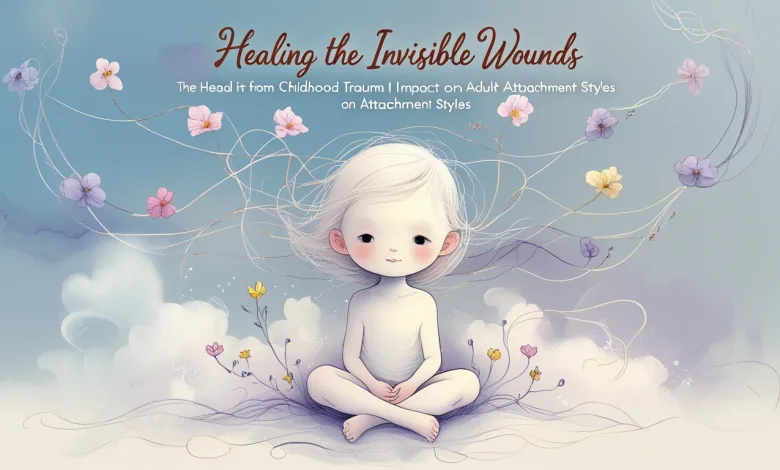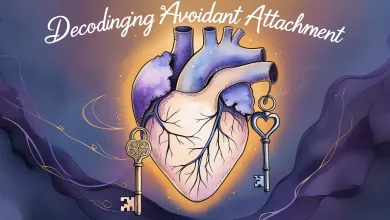Healing Childhood Wounds: How Early Experiences Shape Adult Relationships

A Gentle Path to Understanding and Recovery
Hello there. As a psychologist who’s worked with countless individuals on their healing journeys, I’ve seen firsthand how our earliest experiences profoundly shape who we become. What happens in childhood doesn’t just fade into memory—it creates patterns that can influence our connections with others throughout our lives.
How Childhood Difficulties Leave Their Mark
When we experience difficult situations as children, whether through overt trauma or subtle, persistent patterns of disconnect, our developing minds and bodies adapt to survive. These adaptations aren’t just emotional responses—they actually shape our neurological development.
The challenges that affect us might include:
- Not having emotional needs consistently met
- Regular criticism or harsh judgment
- Growing up in unpredictable environments
- Experiencing ongoing stress
- Various forms of mistreatment
- Significant losses or separations
These experiences don’t just create difficult memories. They influence how our stress response systems develop, sometimes creating a heightened state of alertness that persists into adulthood, long after the original situations have passed.
How We Learn to Connect: Relationship Patterns
Our early relationships with caregivers teach us what to expect from others. These expectations become templates that influence our connections throughout life:
Secure Connection Patterns
Those fortunate enough to receive consistent care often develop healthy approaches to relationships. They generally:
- Feel comfortable with closeness
- Express needs clearly and directly
- Trust others while maintaining healthy boundaries
- Recover relatively quickly from relationship difficulties
Anxious Connection Patterns
When care was inconsistent, we might develop patterns characterized by:
- Persistent worry about being abandoned
- Seeking frequent reassurance from others
- Difficulty trusting that relationships will last
- Intense emotional responses to separation
Distancing Patterns
When emotional closeness was overwhelming or unsafe, we might learn to:
- Maintain emotional distance in relationships
- Highly value self-sufficiency
- Feel uncomfortable with others’ emotional needs
- Struggle to express vulnerability
Disorganized Patterns
When caregivers were sources of both comfort and fear, complex patterns can emerge:
- Conflicting desires for both closeness and distance
- Unpredictable responses in intimate relationships
- Difficulty regulating emotions during conflicts
- Challenges with consistent trust
Finding Your Path to Healing
Recognizing Your Patterns
The first step toward change is noticing the patterns that might be operating in your life:
- Do your relationships tend to follow similar emotional trajectories?
- Do you find yourself drawn to partners who trigger familiar feelings?
- How comfortable are you with emotional closeness?
Therapeutic Approaches That Help
Many effective approaches exist for healing early relationship wounds:
- Trauma-Focused Cognitive Behavioral Therapy helps reframe traumatic experiences
- EMDR (Eye Movement Desensitization and Reprocessing) helps process difficult memories
- Relationship-Focused Therapy addresses how past experiences affect current connections
- Somatic Experiencing works with how trauma is held in the body
- Inner Child Work helps reconnect with and nurture the wounded aspects of ourselves
The Remarkable Capacity for Change
What science has shown us is truly encouraging: our brains possess remarkable adaptability throughout life. The patterns formed in childhood aren’t permanent destinations—they’re starting points that can be reshaped with understanding and consistent effort.
Common Questions About Healing Childhood Wounds
Q: Can relationship patterns really change after so many years? Yes, absolutely. While change requires commitment, with support and practice, we can develop new ways of connecting.
Q: How long does healing typically take? Healing isn’t linear and doesn’t follow a standard timeline. Some shifts happen quickly, while deeper patterns may take longer to transform. The important thing is progress, not perfection.
Q: Can early difficult experiences affect physical health? Yes. Chronic stress from childhood difficulties can influence immune function, inflammation levels, and even heart health. Healing emotional patterns often brings physical benefits too.
Moving Forward: Your Journey of Growth
Remember that healing isn’t about erasing the past—it’s about integrating those experiences into a fuller understanding of yourself. The challenges you faced don’t define you, but understanding them can illuminate your path forward.
Every step you take toward understanding your patterns brings you closer to creating the connections you truly desire. Your capacity for growth and change remains vibrant throughout life.





